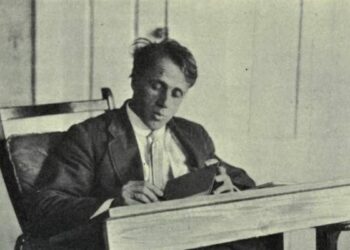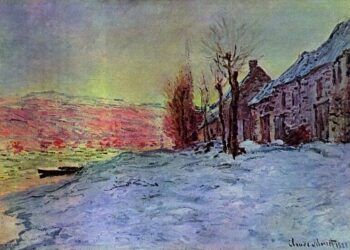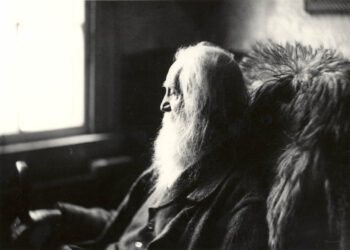Ariel Poem Summary
- “Stasis in darkness.” The darkness and silence that permeate the poem’s opening lines may be symbolic of a period of reflection or calm.
- “Then the substanceless blue” The speaker mentions a change in mood or perception as the scene goes from being gloomy to being blue.
- “Pour of tor and distances.” The words “tor” and “distances” imply a wide-ranging environment, which could represent the speaker’s struggles both inside and outside of themselves.
- “God’s lioness,” The speaker challenges conventional gender stereotypes and exudes strength by referring to herself as a strong and forceful person.
- “How one we grow,” This line hints at personal growth and transformation, suggesting that challenges lead to development.
- “Pivot of heels and knees!” The speaker emphasizes movement and change, possibly indicating a departure from a stagnant situation.
- “– The furrow.” The furrow could symbolize a mark left behind by progress or struggle, emphasizing the difficulty of the journey.
- “And I am the arrow,” The speaker takes on the identity of an arrow, suggesting a sense of direction and purpose.
- “The dew that flies” This line introduces natural imagery, possibly representing fleeting moments or the ephemeral nature of life.
- “Suicidal, at one with the drive” The speaker’s reference to suicide may be metaphorical, expressing a willingness to confront challenges head-on, even at great personal risk.
- “Into the red” The color red can evoke strong emotions, possibly indicating intensity or passion.
- “Eye, the cauldron of morning.” The eye is described as a cauldron, suggesting a brewing intensity and the beginning of a new day or phase.
- “A man’s body, like a child’s, swings in a circle,” The mention of a man’s body and a child’s implies a cyclical nature, possibly alluding to the inevitability of life’s patterns.
- “Like a dog leaping at infinity.” The image of a dog leaping suggests boundless energy and enthusiasm, perhaps highlighting the speaker’s determination.
- “– Then the substanceless blue” The repetition of the substanceless blue creates a cyclical structure, indicating a return to a similar state as in the opening lines.
- “Pour of tor and distances.” The poem concludes by revisiting the tor and distances, leaving the reader with a sense of cyclicality and unresolved tension.
Also Read-
Ariel Poem
Conclusion
“Ariel” by Sylvia Plath is a complex and emotionally charged poem that delves into themes of transformation, identity, and the cyclical nature of life. Through vivid imagery and intense language, Plath paints a portrait of a speaker grappling with internal struggles and the desire for self-discovery. The poem’s structure, marked by cycles and repetitions, reflects the ongoing nature of the speaker’s journey.
Ariel Poem Summary line by line-The imagery in “Ariel” is rich and varied, incorporating elements of nature, mythology, and personal introspection. The speaker’s identification with powerful figures like “God’s lioness” and the metaphorical use of the arrow suggest a quest for strength and direction. The cyclical references, such as the substanceless blue and the furrow, create a sense of repetition and continuity in the speaker’s experiences.
Ariel Poem Summary line by line-The poem’s exploration of the color red, the cauldron of morning, and the leap towards infinity adds layers of meaning, evoking intense emotions and a sense of boundless potential. The use of language, both striking and evocative, contributes to the overall impact of the poem.
FAQ:
1. Is “Ariel” autobiographical?
While “Ariel” is often considered a confessional poem, not every element in the poem can be directly tied to Sylvia Plath’s life. However, it does draw on her personal experiences and emotions, making it reflective of her struggles and internal conflicts.
2. What is the significance of the title “Ariel”?
“Ariel” is a reference to the airy spirit in Shakespeare’s play “The Tempest.” In Plath’s poem, it may symbolize a desire for freedom, transformation, and a departure from the constraints of the speaker’s life.
3. Why does the poem use cyclical imagery?
The repetition of images like the substanceless blue and the furrow suggests the cyclical nature of the speaker’s experiences. It emphasizes the ongoing journey of self-discovery and the persistence of internal struggles.
4. What is the role of nature in the poem?
Nature serves as a powerful and symbolic backdrop in “Ariel,” contributing to the overall atmosphere and meaning of the poem. The natural imagery represents the external world mirroring the internal turmoil of the speaker.
5. How does the poem explore identity?
The speaker’s identification with powerful and symbolic figures, such as God’s lioness and the arrow, reflects a quest for strength and self-definition. The poem explores the evolving identity of the speaker in the face of personal challenges.

















